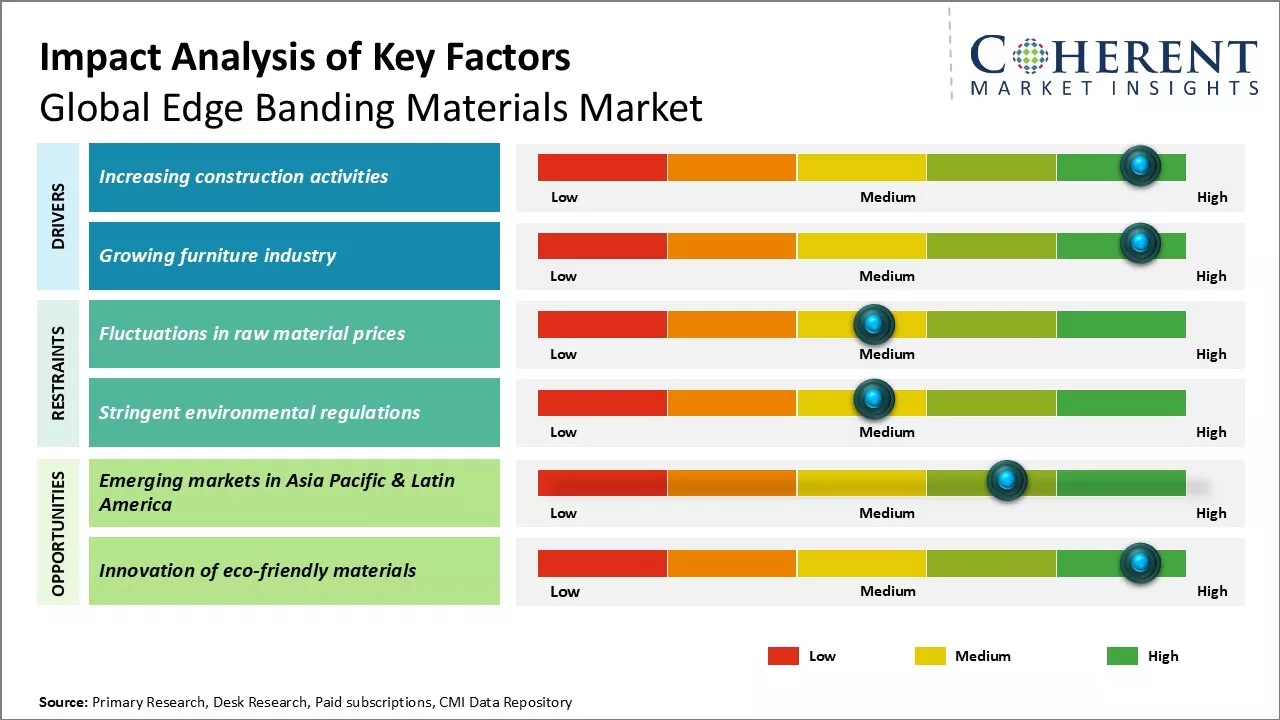The global edge banding materials market is estimated to be valued at USD 1.56 Bn in 2025 and is expected to reach USD 3.00 Bn by 2032, exhibiting a compound annual growth rate (CAGR) of 9.8% from 2025 to 2032.

To learn more about this report, Request sample copy
The edge banding materials market is witnessing significant growth owing to the rising consumption of wood and wood-based laminated boards across various end-use industries such as furniture and cabinetry manufacturing.
Market Driver - Increasing construction activities
The global construction industry has been growing steadily for the past few years with the increase in infrastructure development projects in developing nations, for instance according to data by invest India in 2022, The construction Industry in India is expected to reach US$1.4 Tn by 2025. Many countries are investing heavily in commercial and residential construction to meet the rising housing demand from a growing population. There has been a strong focus on public infrastructure like roads, bridges, airports, rails, etc., to boost economic growth. Reconstruction activities are also picking up in regions affected by natural disasters. All this construction work requires large quantities of wood, plywood, particle boards, and other wood panel materials, which, in turn, drives the demand for edge banding materials.
As developers put up more buildings, apartments, and gated communities, the need for internal and external wood trims, borders, edgings, and finishes rises significantly. Edge banding provides an aesthetically appealing look while also protecting the raw edges of wood panels, boards, and furniture parts. Various types of edge banding strips made of plastic, wood, and laminates are finding widespread application in construction joinery works, wooden flooring, windows, doors, and other fixtures. The booming real estate sector with new housing projects emerging across major cities in Asia Pacific, Africa, and Latin America is a key growth lever for edge banding producers. Even commercial spaces like malls, offices, and other buildings utilize edge banded interior components on a large scale.
Joining thousands of companies around the world committed to making the Excellent Business Solutions.
View All Our Clients